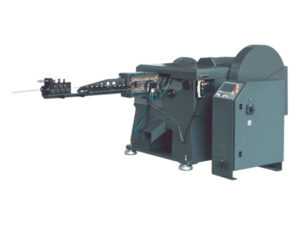The Importance of Proper Document Destruction
With the growing volumes of confidential and sensitive information being printed, document destruction has surged to the forefront as a vital privacy safeguard. Shredding provides a definitive end-of-life solution for documents that could otherwise compromise personal and corporate security if discarded carelessly. The practice of paper shredding dovetails with compliance laws, which mandate secure disposal of sensitive documents, effectively reducing the risk of information theft. Moreover, when disposed of properly, shredded paper is a valuable asset to the recycling sector, capable of being repurposed into a variety of products and reducing the need for virgin paper pulp.
Shredding as a Sustainable Practice
Shredding epitomizes a key component of a circular economy — it extends the life of paper products by transforming them into raw material for new recycled items. Instead of ending up in landfills, shredded paper can be turned into new sheets of paper or other paper goods, reducing the toll on our natural resources. This approach hinges on resource efficiency, minimizing waste, and repurposing materials wherever possible. Embracing the process of shredding thus contributes to a more sustainable economic system, decreasing both the environmental footprint and costs associated with new material production.
Innovations in Shredding Technology
Shredders have come a long way from their bulky, inefficient ancestors. Modern shredders boast improved energy efficiency, the ability to handle various materials, and advancements that minimize dust and noise pollution. Some innovative shredders have even adopted machine learning and AI to optimize their operation for different paper types and loads while ensuring the user experience is hassle-free. This progress in shredding equipment is a response to the increased need for secure document destruction and recycling efficiency, and it plays a pivotal role in reducing the operational costs and environmental impacts of paper waste management.
Shredding Beyond Paper: A Holistic Approach
The scope of shredding has expanded well beyond paper to encompass a range of materials, including electronic waste. Electronic devices, once obsolete, enter the waste stream laden with sensitive data and hazardous substances. Secure e-waste management is imperative, as it prevents information leaks and controls the spread of toxins like lead and mercury from leaching into soil and water sources. Incorporating e-waste shredding into the broader spectrum of recycling efforts mitigates risks associated with data breaches. It recovers precious metals and materials for reuse. This holistic approach to shredding broadens its impact on environmental conservation and resource sustainability.
Community Shredding Initiatives and Awareness Campaigns
Education and community involvement are invaluable tools in promoting environmental stewardship. Across towns and cities, local governments and organizations host shredding events, allowing residents to dispose of documents and e-waste securely. These programs are not just about disposal; they’re educational, aiming to instill a recycling culture and drive home the importance of proper waste management.
The Future of Paper Consumption and Waste Management
Digital solutions and decreasing reliance on paper signal a shift in consumption patterns. Nevertheless, the existing volume of paper waste still necessitates an effective waste management framework. Shredding and recycling methods must evolve to keep pace with these changing dynamics. This includes investing in technologies and systems that improve collection and processing efficiencies and foster an environment where sustainable practices are the norm. Every stakeholder, from individual consumers to large corporations, bears a responsibility in this paradigm shift toward minimizing paper waste and enhancing recycling efforts.





